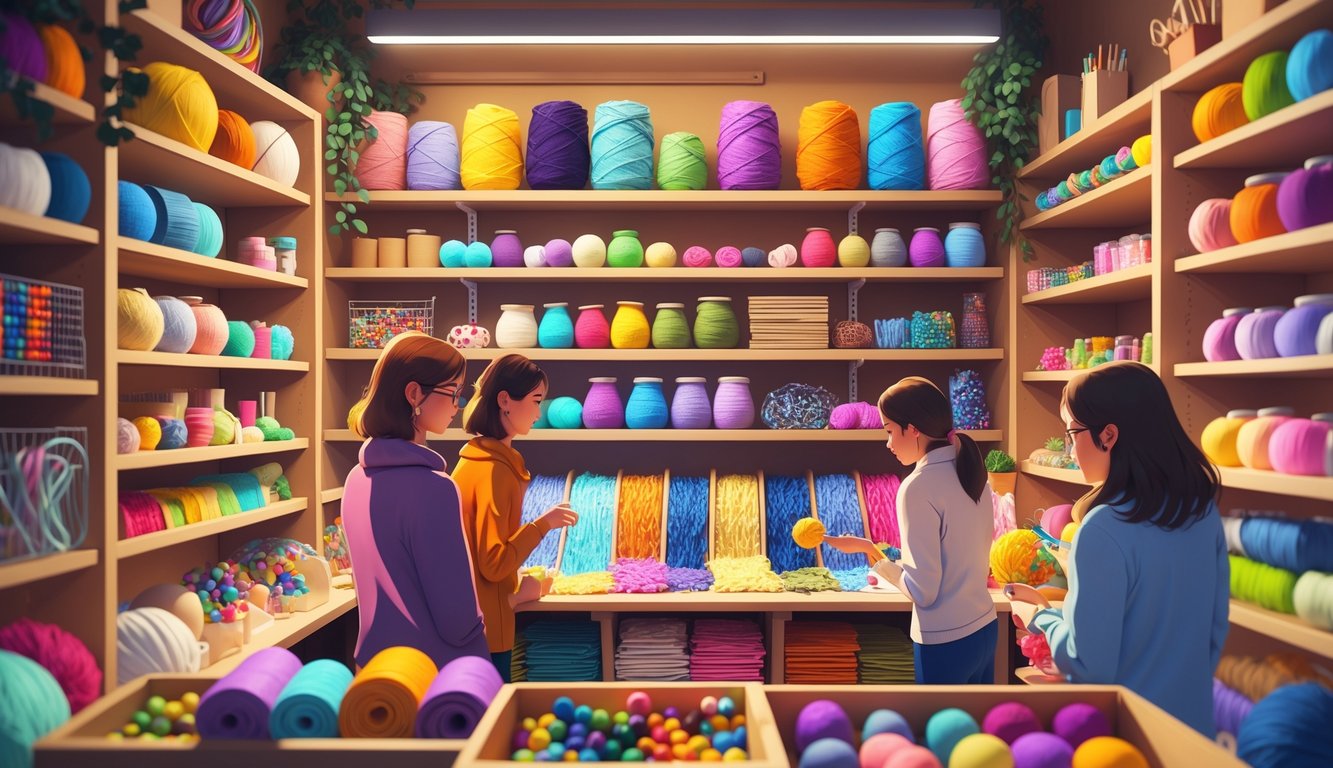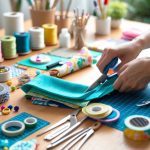
The Future of Crafting, Community, and Material Swaps
You’d think retailers would catch on, but every crafter I know is already plotting how to dodge the next overpriced supply drop. The real deals? They’re in DMs, garage swaps, or that shoebox of vintage buttons at your neighbor’s estate sale.
Trends in Collaborative Crafting
Honestly, why do “official” craft store events always feel like a sales trap? Meanwhile, I saw this spreadsheet in a local forum—someone organized a swap for yarn, fabric, and scrapbooking stuff. Over a hundred pounds of material gone in two hours. No store involved. Three crafters I know from Instagram say they save $40–$100 per project just by swapping. That’s not nothing.
People chase new techniques, sure, but the best part is seeing a ceramics person trade firing glazes for watercolors, then teach each other. Pew’s 2024 numbers say 58% of hobbyists join group chats for swaps or advice, and it’s only growing. I swear, sometimes crafting feels like a weird mashup of a flea market and a potluck. Ever try to organize a block-wide fiber swap and end up with six bags of beads you didn’t want? Same.
Empowering Creativity Beyond Retail
There’s something freeing about skipping the store. Not just “yay, saved five bucks on washi tape,” but actually learning pottery from a girl who traded her entire linocut press for a bolt of denim. That’s skills and supplies moving sideways, not top-down. I messaged a couple jewelry makers last month—they’d rather swap than buy. “Nothing at the chain matches old-stock findings, and the stories matter,” one said.
People share patterns fast in these circles. Someone posts a complex jacket PDF and offers it as swap currency for rare wool—no cash, just barter. That kind of creativity doesn’t happen at a Michaels’ sale. Retailers must notice, but they’ll never admit the most active crafters are multiplying skills, not receipts. Why would I pay full price when swapping gets me legacy tools, upcycled material, and three new techniques a month? Not exactly what chain stores want you chatting about, but here we are.
Frequently Asked Questions
Every time someone brings up craft fairs or swaps, I get this urge to rant about all the things I wish I’d known years ago—overpaying for embroidery hoops, missing out on swaps, and the endless drama of which booth sold out before noon.
What kinds of craft fair items tend to sell out quickly?
You think you’ll have all weekend to browse, then—boom—resin keychains and beeswax wraps are gone before you even finish your coffee. I heard from an Etsy seller (seriously, $20K/month, I checked) that cute, useful stuff—hand-poured candles, reusable bags, minimalist jewelry, anything giftable—vanishes fast.
Ceramic pins? Always gone early. Plant propagation stations? Wiped out. There’s always someone whose sourdough kits evaporate. I once fought for the last pack of hand-stamped gift tags. Still don’t know who made them.
Can you give tips on how to price homemade craft items for profitability at fairs?
Honestly, pricing kills me. People say triple your materials and add a “fair wage,” but do I count the electricity for my sewing machine? The $7 latte that kept me up all night? That business book said to check what others charge, but nobody lists packaging, and why are buyers suddenly fine with $18 for a scrunchie?
I’ve panicked and undersold more times than I care to admit. You’d think after a decade making mini sketchbooks I’d have it down. Don’t forget taxes, booth fees, card fees, or PayPal’s weird extra percent when your phone glitches. Someone needs to make a price calculator for anxious crafters. I don’t want to pay people to take my macramé, thanks.
What are some craft supplies that are worth trading instead of buying new?
Why are people so hesitant to swap? Swaps are the only reason I ever got real Japanese origami paper without spending $30 on a sampler pack. Fabric scraps, unopened high-end paint tubes, specialty yarn—all gone in a flash.
Last month, metal stamping blanks went from “who wants these?” to “must have” because someone brought citrine pigment for resin. Glue guns, felting needles, scissors (still in the package, what a waste!), bead organizers—these are gold at swaps. Beginners never hear that local swaps have stuff you can’t even special order at Michael’s.
Are there certain items that are discouraged from being sold at craft fairs?
Am I the only one who finds the “no food unless licensed” rule oddly specific? I keep seeing people get shut down for selling home-baked cookies or bath bombs without safety labels. Hand sanitizer in reused bottles? Banned everywhere last year (Health Canada had a whole recall thing).
Nobody wants the fire marshal at their table because of unlabeled candles. And don’t even try to sell anything that looks like a weapon—letter openers, “decorative” knives, whatever. Stuffed toys with loose buttons? There’s a rule for that. Organizers will send you home for less. My friend keeps a three-page banned list in his notebook. Drama, but after last November, I get it.
What are the benefits of participating in a craft supply swap in your community?
Even if you never swap, just watching someone unload 12 pounds of embroidery floss is wild. I cleared out half my closet trading ribbons for vintage buttons with a quilter who, by total luck, needed my leftover macramé cord. Also, you find out who the real hoarders are.
A lot of swap organizers team up with libraries or art centers, so you’re sometimes one coffee away from a surprise art demo or a pop-up tool library. I once tried counting all the unopened foam stamps at our April swap—gave up after 200. I never thought swapping would get me so many weird connections, but now half my projects start with something traded.
How do I find a craft swap library, and what should I know before joining?
Honestly, good luck finding one of these so-called “libraries” online—Google’s useless for this. My favorite one? It’s buried somewhere in a church basement, Tuesdays only, and I’m not even sure anyone’s touched their website since 2012. I usually just spot a flyer taped to the window at the fabric store, or maybe someone’s cousin emails a random invite, or it’s that weird lady at the yarn aisle whispering about “the swap.” If there’s a cardboard sign that says “Free Yarn, Bring Extra,” I just wander in, hope for the best. Pens? Forget it. There’s always a signup sheet and zero writing utensils, so bring your own or just fake it.
Swaps are weird. Some places want you to label every scrap of fabric, every single bead, like they’re running a museum. Others? Total chaos—someone dumps a pile of tangled embroidery floss in a shoebox, and nobody blinks. I’ve seen a guy label his stuff with neon washi tape, and another just shrugs and says, “Take what you want.” Last time, I swapped a stack of old sewing patterns for, uh, three balls of merino? And then somehow I left with a vintage paper trimmer I didn’t even mean to take. Do you check out at the door? Who knows. Half the time, the “librarian” is just there for the cookies and doesn’t care what you walk out with.



